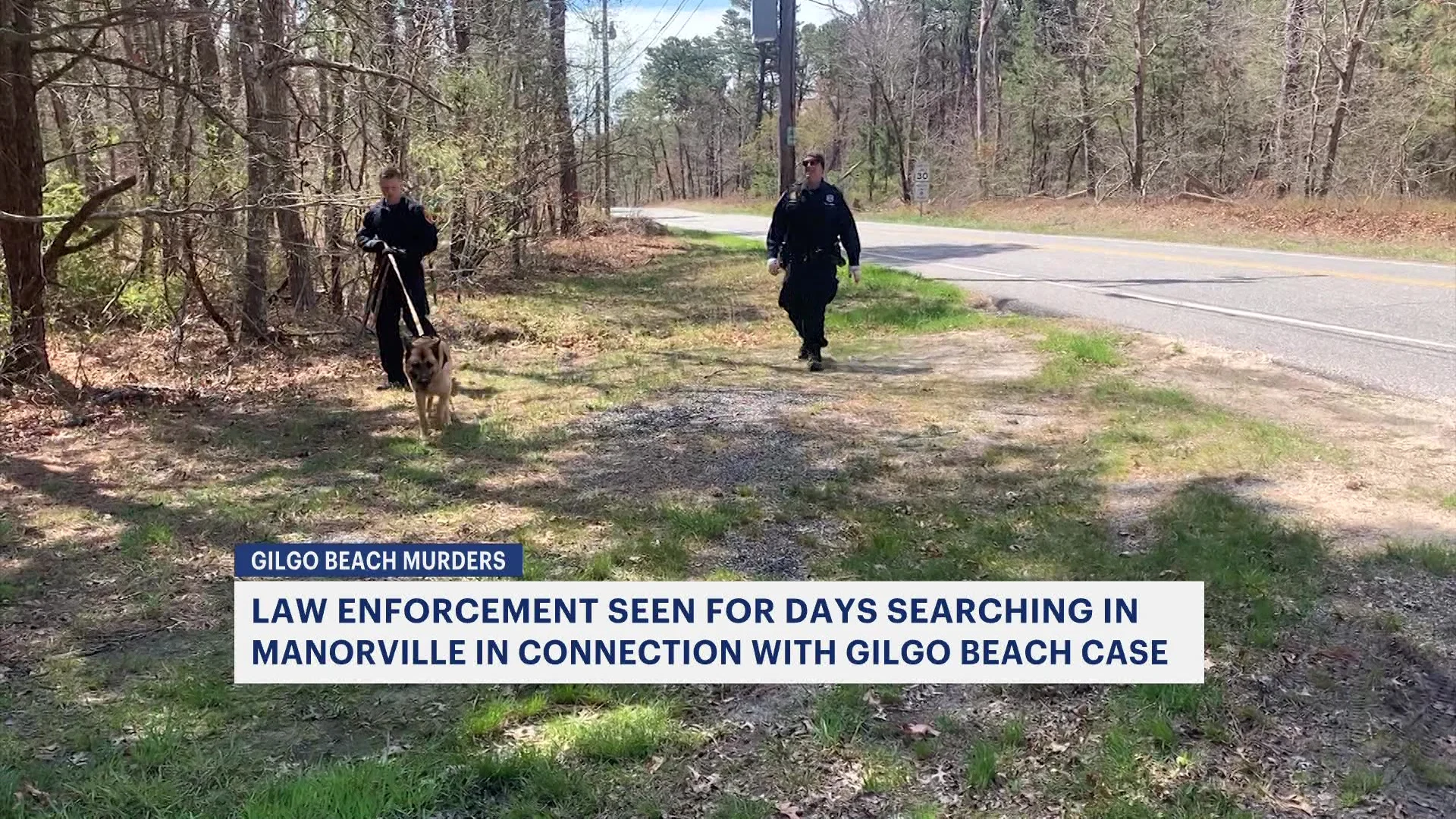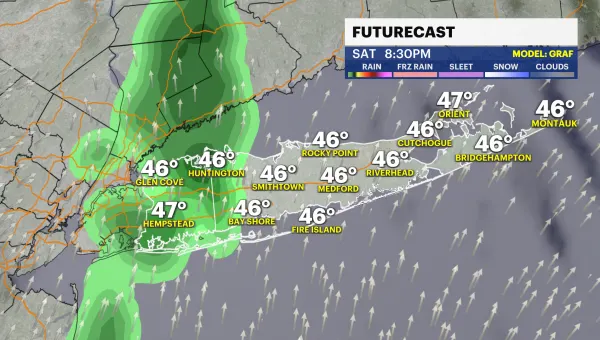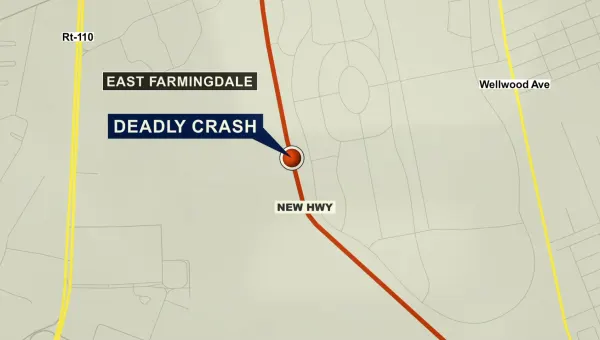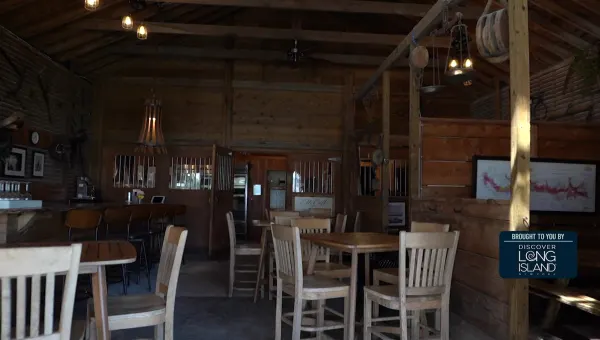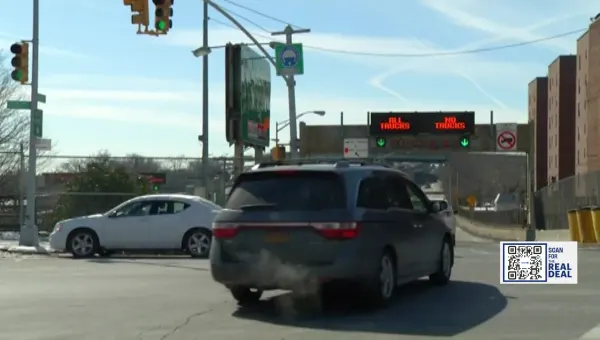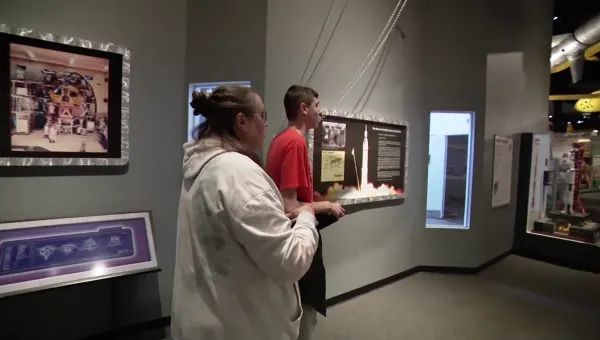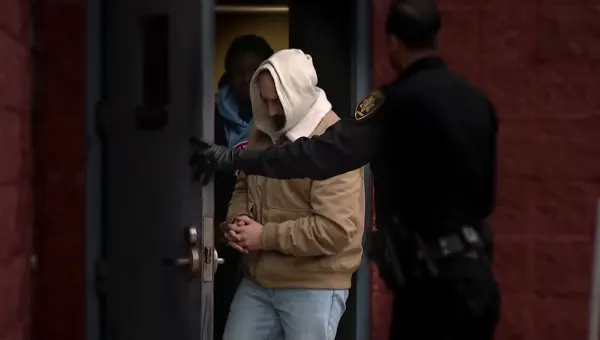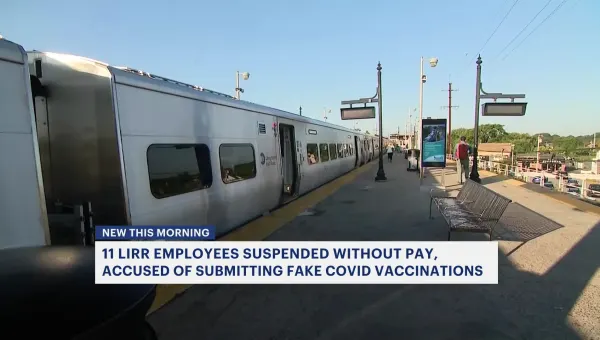Wreckage, remains being gathered at N.Y. crash site
(AP) - Investigators began gathering pieces of the incinerated wreckage of a commuter airliner early Saturday in search of clues to the cause of the fiery crash that killed 50 people. Workers also had
News 12 Staff
•
Feb 16, 2009, 6:37 PM
•
Updated 5,547 days ago
Share:

(AP) - Investigators began gathering pieces of the incinerated wreckage of a commuter airliner early Saturday in search of clues to the cause of the fiery crash that killed 50 people.
Workers also had begun the somber task of removing the remainsof the victims from the crash site - a suburban house.
Recovery could take several days, said Steve Chealander,spokesman for the National Transportation Safety Board. "We'revery sensitive to the families," he said.
Investigators have been examining instrument data and havelistened to the last words of the pilot and co-pilot of Flight 3407in an effort to determine whether ice on the plane's wings causedthe crash.
Officials say the crew of the Continental Connection flightremarked upon significant ice buildup on the wings and windshieldshortly before the aircraft pitched violently and slammed into thehouse Thursday night.
Ice on the wings can interfere catastrophically with anaircraft's handling and has been blamed for a number of major airdisasters over the years, but officials said they had drawn noconclusions as to the cause of this crash.
Chealander said early Saturday that the icing noted by the pilotof Flight 3407 is just one of several things investigators arelooking at.
The NTSB has been pressing for more regulations to improvedeicing, he said.
"We don't like the progress that's taken place right now,"Chealander said. "It's something that requires constant focus."
The NTSB had made recommendations "for several years," hesaid.
The aircraft, bound to Buffalo from Newark, N.J., went down inlight snow and mist - ideal icing conditions - about six milesshort of the airport, plunging nose-first through the roof of thehouse in the suburb of Clarence.
All 44 passengers, four crew members, an off-duty pilot and oneperson on the ground were killed. Two others escaped from the home,which was engulfed in a fireball that burned for hours, making ittoo hot to begin removing the bodies until around nightfall Friday.
Families of the victims remained secluded in a hotel Saturday,and police turned reporters away.
Investigators pulled the "black box" flight recorders from theincinerated wreckage, sent them to Washington and immediately begananalyzing the data.
It was the nation's first deadly crash of a commercial airlinerin 2½ years.
One of the survivors from the house, Karen Wielinski, 57, toldWBEN-AM that she was watching TV when she heard a noise. She saidher daughter, 22-year-old Jill, who also survived, was watching TVelsewhere in the house.
"When the ceiling first fell down, I think the first thing Isaid to myself was, 'Is this real? Is this reality? Was I dreamingsomething?"' she told the station. "I didn't think I was going toget out of there. I thought, this is it."
She escaped with only a fractured collar bone, while herdaughter suffered scratches to her feet. She said she hadn't been told the fate of her husband, Doug."He was a good person, loved his family," she said.
Among the passengers killed was a woman whose husband died inthe World Trade Center attacks of Sept. 11; one of the world'sleading experts on the Rwandan genocide; and two musicians whoplayed with trumpeter Chuck Mangione.
Chealander said Friday that the crew of the twin-engineturboprop discussed ice buildup on the windshield and the leadingedge of the wings at an altitude of around 11,000 feet as the planewas descending for a landing.
The flight data recorder indicated the plane's deicing equipmentwas in the "on" position, but Chealander would not say whetherthe equipment was functioning.
The landing gear was lowered one minute before the end of theflight at an altitude of more than 2,000 feet, and 20 seconds laterthe wing flaps were set to slow the plane down, after which theaircraft went through "severe pitch and roll," Chealander said.
The crew raised the landing gear at the last moment, just beforethe recording ran out. No mayday call came from the pilot.
"Icing, if a significant buildup, is an aerodynamic impediment,if you will," Chealander said. "Airplanes are built with wingsthat are shaped a certain way. If you have too much ice, the shapeof the wing can change requiring different airspeeds."
But he refused to draw any conclusions from the data, andcautioned: "We are not ruling anything in or anything out at thistime."
Witnesses heard the plane sputtering before it plunged throughthe roof of the house.
"It was like you were on the runway. It wasn't just different.It was like it was going to hit your house," said Michelle Winer,46, who ran to look out her front window to see what was happening."I saw a glow in the sky and I ran to get my husband. He thought Iwas crazy and then there was a huge explosion. You heard it andfelt it."
After the crash, at least two pilots were heard on air trafficcontrol circuits saying they had been picking up ice on theirwings.
The 74-seat Q400 Bombardier aircraft, in the Dash 8 family ofplanes, was operated by Colgan Air, based in Manassas, Va. Colgan'sparent company, Pinnacle Airlines of Memphis, Tenn., said the planewas new and had a clean safety record.
Smaller planes like the Dash 8, which uses a system of pneumaticde-icing boots, are generally more susceptible to ice buildup thanlarger commuter planes that use a heating system to warm the wings.The boots, a rubber membrane stretched over the surface, are filledwith compressed air to crack any ice that builds up.
A similar turboprop jet crash 15 years ago in Indiana was causedby ice, and after that the NTSB recommended more aggressively usingpneumatic de-icing boots. But the FAA has not adopted therecommendation. It remains on the NTSB's list of most-wanted safetyimprovements.
The pilot, Capt. Marvin Renslow, had been with the airline fornearly 3½ years and had more than 3,000 hours of flying experiencewith Colgan, which is nearly the maximum a pilot can fly over thatperiod of time under government regulations.
The last fatal U.S. crash of a commercial airliner was on Aug.27, 2006, when a Comair airliner took off from a runway inLexington, Ky., that was too short. The crash killed 49 people.
